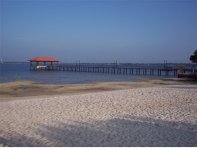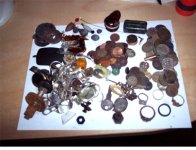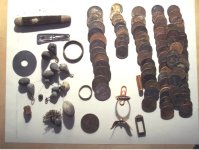So, let me see. Hmm,
The BHID and the DFX share the same frequencies. For that matter, the DFX and the MXT share one of the frequencies.
The DFX has programmable AC and DC gain and ajustable ground balance.
The BHID is preset and way too HOT for Black Sand. Lacks a Signal Balance Control or gain levels, similar to the Successful but discontinued XL-PRO
The BHID, like the Quantum XT, which was an outstanding performer in most turf conditions but would also overload because the PRE-AMP for some strange reason was PRESET at a high level, and TOO HOT like the Beach Hunter for Black Sand or Heavy Mineral Conditions. The DFX is of course eminently programmable.
The DFX has the LCD VDI display electronics and the wonderful Signagraph capability.
The BHID has RED-YELLOW-GREEN LEDs instead, but only when you tun the sensitivity control down does it settle down properly and it still needs slower averaging.
DFX has adjustable DC gain for All metal mode.
The BHID All metal mode is preset at a High Gain Level. Well that's GREAT for a low mineral environment like AIR, but in highly mineralized ground, for example, Lake Tahoe-Kings beach and most California beaches, it overloads 3 inches from the top of the sand.
The DFX has a very sophisticated discrimintation capability.
The BHID discrimination control is absent and it is preset by the factory.
So, is it the same design? I think that is stretching it a bit. Yes, they do use the same frequencies.
I believe that if you pin someone like Jimmy Sierra on that question, he will tell you that it is a different design.






